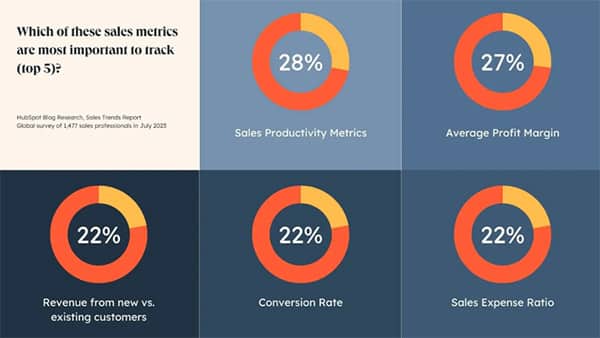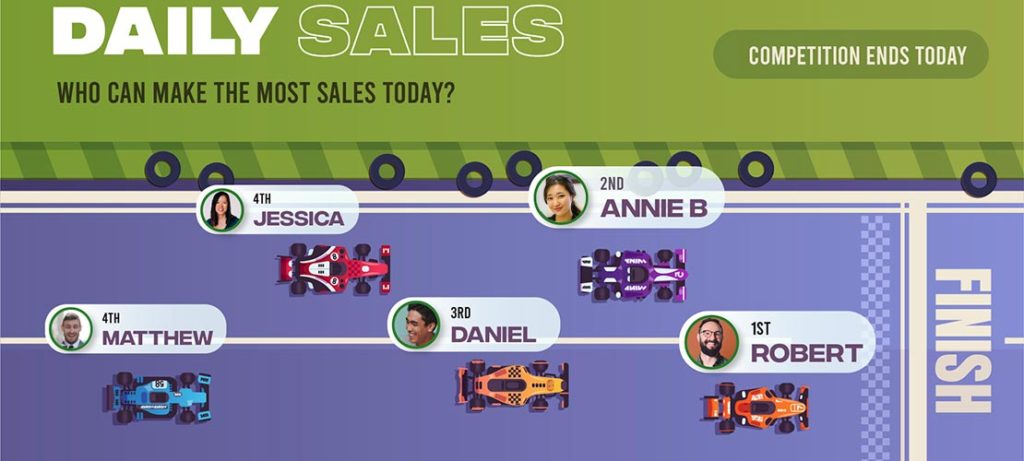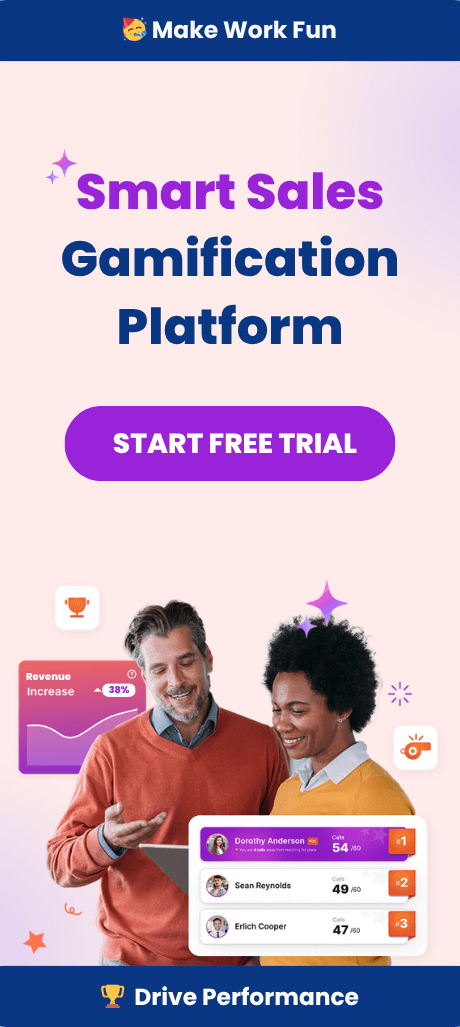Sales leaderboards—love them or hate them, they’re everywhere in modern sales organizations. For sales professionals and office leaders, the debate around sales leaderboards and their impact on sales team performance is more relevant than ever. With the rise of sales gamification software and customizable leaderboards, companies face a crucial question: do sales leaderboards actually motivate employees, or can they create a toxic competitive environment? Let’s explore both sides and find out how you can strike the right balance for your sales force.
The Classic Appeal of Leaderboards
Sales leaderboards have a long-standing tradition in the sales department. Their purpose is simple: track progress, showcase top performers, and encourage employees to push for higher numbers. When done right, they can energize your team and boost employee engagement. Seeing individual performance displayed in real time data creates a sense of accountability and motivates reps to work harder. Leaderboards also foster a fun and competitive work environment where employees can celebrate each other’s successes and strive to achieve big goals together.

However, the appeal goes beyond just competition. Leaderboards help managers highlight progress and recognize extra effort, which benefits both the individual and the team. They create transparency around key metrics, allowing salespeople to understand exactly where they stand and what they need to do to improve. When aligned with shared values and business objectives, leaderboards become powerful tools that increase productivity and inspire a culture of continuous improvement.
Healthy Competition vs. Toxic Competition
There’s no denying the thrill of friendly rivalry. Healthy competition pushes sales reps to go the extra mile and develop skills that lead to high performance. It encourages employees to challenge themselves and their peers, creating an environment where everyone benefits from mutual motivation. This kind of competition builds camaraderie and drives productivity, making the workplace more engaging and rewarding for all.
On the other hand, too much focus on ranking can breed toxic competition, harming both morale and collaboration. When leaderboards emphasize only the top performers or fail to recognize incremental improvement, many reps feel discouraged and disconnected. This can create a cutthroat culture that undermines teamwork and leads to burnout in the long run. Toxic competition can also negatively impact job satisfaction and job performance, as employees may feel increased stress and less fulfillment in their roles. Managers need to carefully balance competition with support to maintain a positive work environment where all reps feel valued and motivated.
Spotlight on Top Performers—But at What Cost?
Highlighting top performers with leaderboards is a proven way to reward sales success and inspire others to achieve more. Recognizing those who consistently excel can boost morale and encourage reps to push harder. For example, when a top performer is recognized on the leaderboard, their strategies and achievements serve as a clear example for others to emulate, creating aspirational goals that drive overall team improvement.

Yet, constantly being at the bottom can demotivate other reps, making them feel left behind rather than inspired to improve. When only a few people win recognition, the majority may disengage, losing motivation and productivity. This imbalance can hurt the entire sales force and create divisions within the team. To avoid this, it’s important to celebrate varied achievements and progress, ensuring that every person has the opportunity to feel successful and valued.
How Salesforce Uses Leaderboards
Salesforce leverages advanced sales gamification tools to celebrate key metrics and energize sales contests, fostering a culture that balances recognition with continuous learning. By highlighting both individual achievements and team progress, Salesforce encourages employees to stay motivated without fostering negativity or healthy competition.
Spinify integrates seamlessly with Salesforce, pulling real-time data to create customizable leaderboards that reflect actual performance. This integration ensures sales reps earn points based on meaningful activities, helping them understand their progress clearly. With Spinify’s dynamic platform, Salesforce teams benefit from engaging, transparent competitions that drive motivation and boost overall sales performance.
Are Leaderboards One-Size-Fits-All?
No two sales teams are the same, and what drives motivation in one group might backfire in another. Recognizing this, customizable leaderboards like those from Spinify allow you to tailor the experience to fit your unique sales strategy and company culture. For more creative ways to motivate your sales team, explore strategies that ensure leaderboards resonate with your team’s values and goals, making motivation more personalized and effective.
By adapting leaderboards to different roles, seniority levels, or territories, you create a fairer competitive environment. This customization helps all reps feel they have a real chance to succeed, boosting morale and engagement across the board rather than just spotlighting a select few.
Tracking the Right Metrics

Focusing solely on revenue or closed deals can paint an incomplete picture of sales performance. Effective sales leaderboards incorporate diverse performance metrics such as customer satisfaction scores, call activity, and lead follow-ups. Leaderboards are created to track these different metrics and activities, allowing teams to monitor progress and engagement across multiple areas.
This broader approach encourages reps to develop skills that lead to sustainable success, not just short-term wins.
Including these varied metrics helps reps understand what behaviors truly drive results and customer satisfaction. It also promotes a balanced sales strategy where quality and quantity matter, ultimately benefiting both the sales team and the business.
Employee Engagement Beyond Numbers
Employee engagement goes beyond who’s at the top of the leaderboard. Celebrating improvements, new skills, and teamwork fosters a more inclusive and supportive workplace competition. Recognizing these achievements encourages reps to focus on personal growth and collaboration, which strengthens the entire sales force.
This approach creates a culture where every rep feels valued, regardless of their current rank. When employees see that progress and effort matter as much as final numbers, they are more motivated to contribute and stay committed to the team’s success.
The Psychological Impact on Sales Reps
While leaderboards can boost motivation, they can also increase stress and pressure, especially for newer or less experienced sales reps. The feeling of “always being watched” may lead to anxiety or fear of failure, which can negatively affect performance and even drive talent away if not managed carefully.
Understanding these psychological effects is crucial for managers. Providing support, encouraging a growth mindset, and balancing competition with collaboration helps create a healthier environment where reps feel safe to learn, take risks, and improve without fear of judgment.
Gamification: The Double-Edged Sword
Sales gamification can be a powerful motivator, turning routine tasks into exciting challenges that inspire reps to push their limits. When implemented thoughtfully, it taps into both intrinsic and extrinsic motivators, encouraging reps to earn points, badges, and recognition while developing key sales skills. This approach makes work more engaging and can significantly boost sales performance by fostering a culture of continuous improvement and friendly competition.
However, gamification can become overwhelming if overused or poorly managed. Excessive pressure to win or constant contests may lead to burnout and disengagement. Companies like Google use gamification tied closely to learning and personal growth, ensuring that the focus remains on improvement rather than just winning, which helps maintain motivation without causing stress.
Remote Teams and Virtual Leaderboards
With remote work becoming a permanent fixture, sales leaderboards must evolve to support virtual teams effectively. Remote leaderboards should emphasize connection and transparency, helping reps feel part of a cohesive unit despite physical distance. By showcasing team achievements and encouraging collaboration, these tools foster a sense of belonging and shared purpose, which is vital for maintaining engagement in a dispersed workforce.

Moreover, virtual leaderboards can incorporate real-time updates and interactive features that keep remote reps motivated throughout the day. They offer visibility into individual and team progress, making accomplishments visible and celebrated across locations. This approach balances healthy competition with team spirit, ensuring remote teams stay energized and connected without the pitfalls of cutthroat rivalry.
Balancing Transparency and Privacy
Transparency in sales performance can drive accountability and motivation, but it’s essential to respect individual preferences. Some sales reps may feel exposed or anxious when all their metrics are publicly displayed. Offering options to keep certain data private or allowing reps to opt into public recognition helps create a comfortable environment where everyone can participate at their own pace.
Balancing transparency with privacy also promotes trust within the team. When employees feel their boundaries are respected, they’re more likely to engage positively with leaderboards and gamification initiatives. This flexibility encourages honest self-assessment and fosters a culture of support rather than fear, which ultimately leads to better overall performance and satisfaction.
When Leaderboards Demotivate
Static leaderboards that repeatedly showcase the same top performers can quickly demotivate others, causing many reps to disengage. When employees feel they have little chance to shine, their motivation and productivity suffer. To counter this, regularly resetting leaderboards or introducing new categories allows different reps to be recognized for various strengths and achievements, keeping the competition fresh and inclusive.
Introducing diverse categories such as “most improved” or “best team player” ensures that progress and effort are celebrated alongside raw sales numbers. This approach helps maintain enthusiasm across the entire sales force, encouraging reps to focus on personal growth and contribution rather than just rankings, which fosters a healthier, more motivating competitive environment.
Using Leaderboards to Foster Collaboration
Some companies, like HubSpot, use team-based leaderboards to encourage cross-collaboration. By shifting the focus from individual wins to collective success, these leaderboards promote a sense of unity and shared purpose. When sales reps work together toward common goals, it enhances communication, builds trust, and creates a more supportive work environment where everyone feels invested in the team’s achievements.
Team-based leaderboards also help break down silos between departments or regions, encouraging knowledge sharing and cooperation. This collaborative approach balances healthy competition with teamwork, motivating employees to contribute their strengths while celebrating group progress, ultimately driving better overall sales performance.
Recognizing Progress, Not Just Perfection
Celebrating milestones like “most improved” or “best new closer” transforms leaderboards into tools for growth rather than symbols of failure. Recognizing progress encourages reps to focus on continuous improvement, fostering a growth mindset where effort is valued as much as results. This inclusive recognition helps maintain motivation across all performance levels.
By highlighting incremental achievements, companies create a culture that supports learning and resilience. When employees see their hard work acknowledged, even if they aren’t top sellers yet, they feel empowered to keep pushing forward, boosting confidence and long-term engagement within the sales team.
The Role of Sales Contests
Short-term sales contests can inject fresh energy into the team by creating focused bursts of excitement and urgency. Using leaderboards to track these contests keeps the momentum visible and encourages reps to strive for quick wins. This approach prevents burnout by limiting pressure to short intervals rather than ongoing performance demands.
Sales contests also foster friendly rivalry and camaraderie, giving employees a chance to shine in specific areas or challenges. Contests provide opportunities for every sales rep to demonstrate their strengths and be recognized for their individual achievements. When well-designed, contests provide variety and fun, keeping the sales environment dynamic and engaging while reinforcing key sales behaviors aligned with company goals.
Rewarding More Than Just Sales
Consider recognizing reps who exemplify core values or provide exceptional customer service, not just those who close deals. Companies like Zendesk reward behaviors such as helpfulness and customer satisfaction, promoting a well-rounded sales culture. This broader recognition encourages reps to focus on quality interactions, which leads to stronger client relationships and repeat business.
Rewarding diverse achievements also motivates employees who contribute in different ways, fostering inclusivity and engagement. By valuing more than just sales numbers, organizations create a balanced environment where every rep feels their unique efforts are appreciated and impactful.
The Customer Experience: How Leaderboards Affect Satisfaction
The customer experience is at the heart of every successful business, and the way your sales team operates can make all the difference. Sales leaderboards, when thoughtfully designed, can be a powerful tool to boost both sales performance and customer satisfaction. By motivating sales reps through healthy competition and clear incentives, companies can encourage employees to work harder—not just to close deals, but to deliver exceptional service that keeps customers coming back.
Sales gamification software and customizable leaderboards help create a competitive environment where key metrics like customer satisfaction, engagement, and feedback are front and center. When sales teams track progress using real time data, they can quickly identify areas for improvement and adjust their approach to better meet customer needs. This data-driven focus ensures that reps understand how their actions impact both individual performance and the overall customer experience.
It’s Important to Strike the Right Balance
While competition can motivate employees, too much emphasis on individual rankings can lead to toxic competition, where the focus shifts from team success to personal gain. This can undermine collaboration and ultimately hurt customer relationships. Instead, sales teams should use leaderboards to highlight progress, recognize a variety of achievements, and encourage teamwork—creating a culture where everyone is motivated to achieve shared business goals.
Remote teams, in particular, benefit from sales leaderboards that provide real time feedback and foster a sense of community. By making individual and team progress visible, even from a distance, customizable leaderboards help remote sales reps stay engaged, motivated, and connected to the company’s mission. Recognizing both individual and team achievements keeps employee engagement high and ensures that customer satisfaction remains a top priority.
Maximise the Benefits
To maximize the benefits of sales leaderboards for customer experience, managers should:
- Align competitions with the company’s sales strategy and core values
- Use real time data and feedback to track key metrics, including customer satisfaction
- Recognize both individual progress and team achievements
- Encourage collaboration and support among sales reps
- Avoid toxic competition by focusing on healthy, inclusive contests
- Regularly review and update leaderboards to reflect meaningful performance indicators
By following these best practices and leveraging the right sales gamification tools, companies can create a sales leaderboard system that not only motivates employees but also drives continuous improvement in customer satisfaction. In the long run, this approach leads to stronger customer relationships, higher sales performance, and lasting business success.
The Risks of Over-Gamification

While gamification works wonders to energize sales teams, overdoing it can lead to burnout and fatigue. When sales reps face constant pressure from nonstop competitions and endless point chasing, motivation can quickly shift to stress. In many cases, over-gamification has led to decreased productivity and even disengagement, undermining the very goals gamification aims to achieve. Companies like Microsoft wisely balance game elements with ongoing coaching and personalized support, ensuring reps grow sustainably rather than just chasing short-term wins.
Striking the right balance means integrating gamification thoughtfully into your sales strategy. By pacing contests and mixing in skill development and feedback, you keep motivation high without overwhelming your team. This approach nurtures long-term growth and helps reps build confidence and resilience, making gamification a true catalyst for success.
Empowering Employees with Customizable Leaderboards
Giving sales reps control over what metrics they compete on boosts their engagement and ownership of success. When employees choose the key performance indicators that matter most to them, they feel more invested and motivated to improve. Customizable leaderboards foster a sense of autonomy, allowing reps to focus on their strengths and growth areas in a way that feels meaningful and fair. Some platforms make it super simple for sales reps to customize their leaderboard experience, ensuring that everyone can easily tailor the system to their preferences.

This empowerment also encourages healthy competition tailored to individual roles and goals, creating a more inclusive environment. By involving reps in the design of their performance tracking, managers build trust and collaboration, turning leaderboards into tools that inspire rather than intimidate.
Integrating Leaderboards with Incentive Programs
Syncing leaderboards with incentive programs ensures that rewards are earned based on actual performance and meaningful achievements, not just chance or timing. This alignment adds fairness and transparency, motivating reps to focus on behaviors that truly drive sales success. When reps see a direct connection between their efforts, leaderboard standings, and tangible rewards, their commitment and enthusiasm grow.
Moreover, integration streamlines management and tracking, reducing administrative burden and errors. Automated systems update standings in real time, keeping everyone informed and engaged. This seamless connection between gamification and incentives transforms leaderboards from simple scoreboards into powerful motivators that fuel sustained high performance.
Feedback Loops for Continuous Improvement
Encouraging regular feedback from sales reps about the leaderboard system keeps it relevant and effective. When employees have a voice in how performance is tracked and rewarded, they feel valued and heard, which boosts morale and engagement. Managers can identify pain points, adjust metrics, and refine contests to better support team goals and individual growth.
Continuous improvement through feedback loops also fosters a culture of openness and collaboration. By iterating on the leaderboard experience based on real input, organizations create dynamic gamification strategies that evolve with the team’s needs, ensuring motivation remains strong and aligned with business objectives.
Recognizing Team Players, Not Just Lone Wolves
Sales isn’t always a solo sport. Celebrating team wins and collaborative achievements fosters a sense of unity and shared purpose, which strengthens the entire sales force. When leaderboards highlight group successes alongside individual accomplishments, it encourages reps to support one another and share best practices, driving collective growth. This approach builds morale by making every member feel valued for their contributions, no matter their role.
By emphasizing teamwork, sales departments can break down silos and create a culture where collaboration fuels innovation and performance. Recognizing team players helps balance healthy competition with cooperation, ensuring that success is not just about individual glory but about lifting the whole sales team to new heights.
The Future of Sales Gamification Tools
The best sales gamification software, like Spinify, is evolving to be more adaptive, flexible, and supportive. Modern platforms offer customizable leaderboards that cater to diverse sales roles, seniority levels, and territories, ensuring fair competition that motivates every rep. These tools leverage real-time data and AI-driven insights to provide personalized feedback, helping reps understand their progress and focus on meaningful behaviors that drive success.
Looking ahead, sales gamification tools will continue to integrate deeper with existing CRM systems and communication platforms, making participation seamless and engaging. By combining automation, smart analytics, and user-friendly design, these tools empower sales departments to sustain motivation, boost engagement, and achieve consistent high performance across the entire team.
Best Practices for Office Leaders
Office leaders should use leaderboards as one part of a broader sales strategy—never as the only tool. Combining leaderboards with personalized coaching, timely recognition, and ongoing training creates a balanced approach that nurtures both motivation and skill development. This holistic strategy helps reps stay focused on long-term growth rather than short-term wins, fostering resilience and continuous improvement.
Effective leaders also prioritize transparency and fairness in leaderboard design, ensuring all reps feel they have a real chance to succeed. By listening to feedback and adjusting metrics to reflect meaningful performance indicators, office leaders can maintain a positive work environment where competition inspires rather than intimidates, driving sustained sales success.
Leaderboards That Lift Up—Not Tear Down
Sales leaderboards don’t have to be harmful. With thoughtful design, customizable features, and a focus on holistic sales performance, they can energize your team without creating a toxic environment. The right sales gamification tools turn competition into a catalyst for growth, engagement, and customer satisfaction.
Ready to boost your sales team’s performance, engagement, and satisfaction? Try Spinify today and discover the positive impact of smarter, more inclusive leaderboards!




